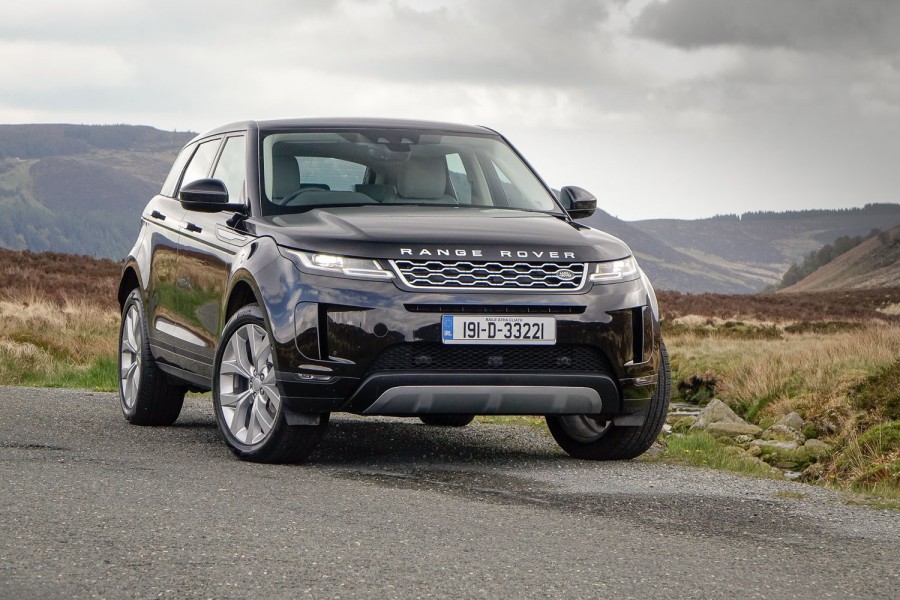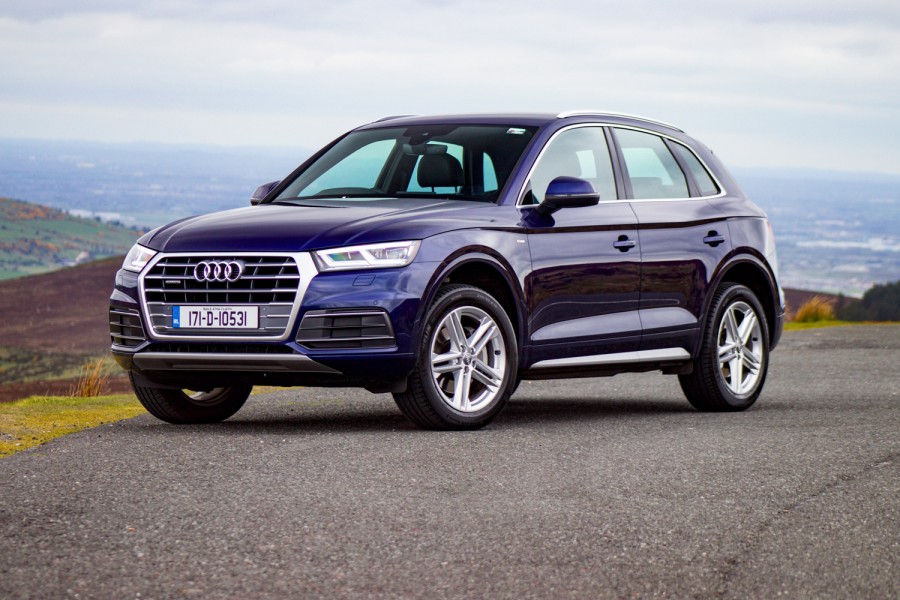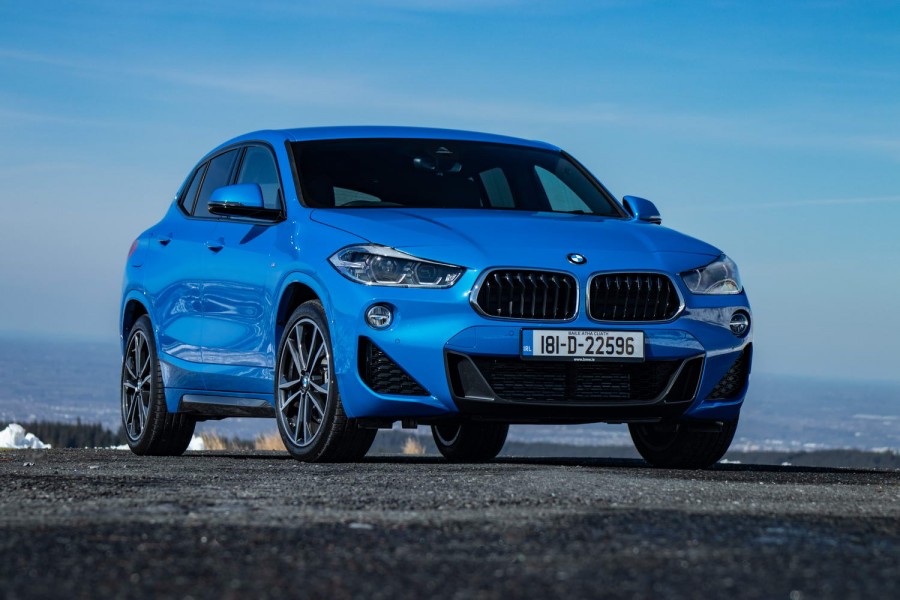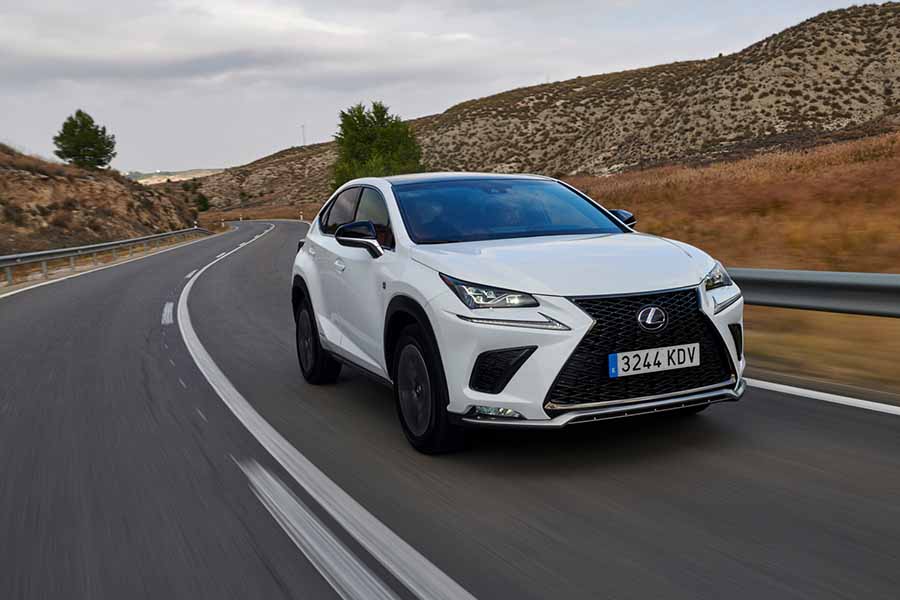What are you driving?
This is the new Range Rover Evoque and it's usually here that we deploy the expected 'bring your own microscope' cliché. We won't though, because it's blindingly obvious from even the most cursory glance at the photos that this new Evoque sticks incredibly close to the styling template of the old one. The only major exterior visual differences are a grille that now sits flush with front bodywork that is more rounded and curvaceous than before, and door handles borrowed from the Range Rover Velar and the Jaguar I-Pace, that retract back into the bodywork when not needed to leave an uninterrupted surface.
Then again, what do you expect? The original Evoque didn't take long to become Land Rover's fastest and best-selling model, and much of that was down to its design and its styling, so clearly Land Rover wasn't going to take the risk of alienating that customer base with an edgy redesign. The cabin, too, continues very much in the style of the last one, but is at least enlivened by the addition of the double-deck InControl Touch Pro Duo touchscreen from the Velar, and a general sense of improved quality. Improved space, too - there's more rear legroom than before (an extra 20mm in fact) and at 591 litres, a bigger boot as well.
That has been achieved in spite of Land Rover effectively carrying over the platform and structure of the original Evoque. There have been a few changes - sufficiently so that Land Rover does describe this as a new chassis, called the Premium Transverse Architecture (PTA). There's still a lot of the old 'LR-MS' platform in there, though, which dates back to the old Freelander 2 and beyond that to the MkIII Ford Mondeo.
Land Rover has managed to make space for hybrid power, though. This version of the Evoque gets a 48-volt mild-hybrid setup, though a more sophisticated plugin-hybrid is on the way. In fact, the only new Evoque without some form of hybrid power is the most basic front-wheel-drive model. The mild-hybrid can add a short burst of 140Nm of extra torque to aid acceleration, can activate the stop-start system across a broader set of circumstances and Land Rover estimates that it can shave as much as 8g/km off the emissions figure.
Name its best bits
Well, the Evoque sure still looks good, as you'd expect it to, considering that it's barely changed from the old one. That extra cabin and boot space are very welcome, though, as is a sense of an improvement in quality levels. The cabin still isn't quite up to Audi standards, but it's definitely better than before. The double-decker touchscreen system is improving all the time too, and felt noticeably slicker in operation than when we first tried it.
The 2.0-litre diesel engine is the same four-cylinder 'Ingenium' unit that we've driven in so many other Jaguar and Land Rover models, but again it's seen some small improvements here. Certainly, it's less thirsty in real-world conditions than the old Evoque ever was, and refinement has also improved by another, still fairly small, notch. The engine mates up well with the nine-speed automatic gearbox, so progress is generally smooth and unruffled.
What really strikes you is the way the Evoque drives. We had all but given up on the idea of a mid-size SUV delivering proper driving entertainment, but the Evoque really does manage to do so. It's a very relaxed car in which to travel, for most of the time, but when the road becomes truly twisting and challenging, it really steps up to the plate. The steering is beautifully weighted and feels great in your palms, with just enough feel and feedback to give you confidence. Even better is the suspension and body control, which keeps the Evoque commendably level under hard cornering, and yet which seems to have the capacity to cope with absolutely the worst surfaces that Ireland can throw at it. It's not an exaggeration to say that, at times, the Evoque can even feel like a tall, over-sized hot hatch, even with that sedate 0-100km/h time.
Anything that bugs you?
It is very pricey, the Evoque. Although it starts at a similar price level to the likes of the Audi Q3, that price spirals upwards with dizzying rapidity, and it's not long before you're deep into Audi Q5 territory. That's fine - the Evoque kind of sits in between those two cars in size terms - but sometimes you do feel as if you're paying over the odds for what's really a fairly compact car.
We do also feel that the cabin design could do with moving on a bit. OK, like the exterior it's stuck to the same template as before and that's fair enough, but a bit more pizazz in the cabin wouldn't go amiss.
Finally, there's the quality issue. As noted above, the Evoque looks and feels really well built, and we didn't experience any issues nor faults with the car, but Land Rover has a poor reputation in this regard, so it will remain a question mark over the Evoque until proven otherwise.
And why have you given it this rating?
This could have been an easy job for Land Rover. Tweak the styling a tiny amount, update the infotainment, and call it a new Evoque. Sit back and watch the happy customers continue to roll in. Thankfully, that hasn't happened - the new Evoque feels (and is) newer than you might think, and proves itself to be a deeply impressive car. It seems like a much more honed and focused version of the old one, and is one of the best cars in its class to drive to boot.
What do the rest of the team think?
I don't think we should be surprised that the new Evoque is cracking to drive; I always said the original one drove more like a hot hatch than it had any right to. Perhaps more importantly given the premium competition, the new Evoque has taken a tangible step up in terms of perceived quality, refinement and luxury. It's a feelgood kinda car and its buyers will continue to love it. Shame the sporty three-door body style has quietly been dropped, though.
Shane O'Donoghue -Editor







































